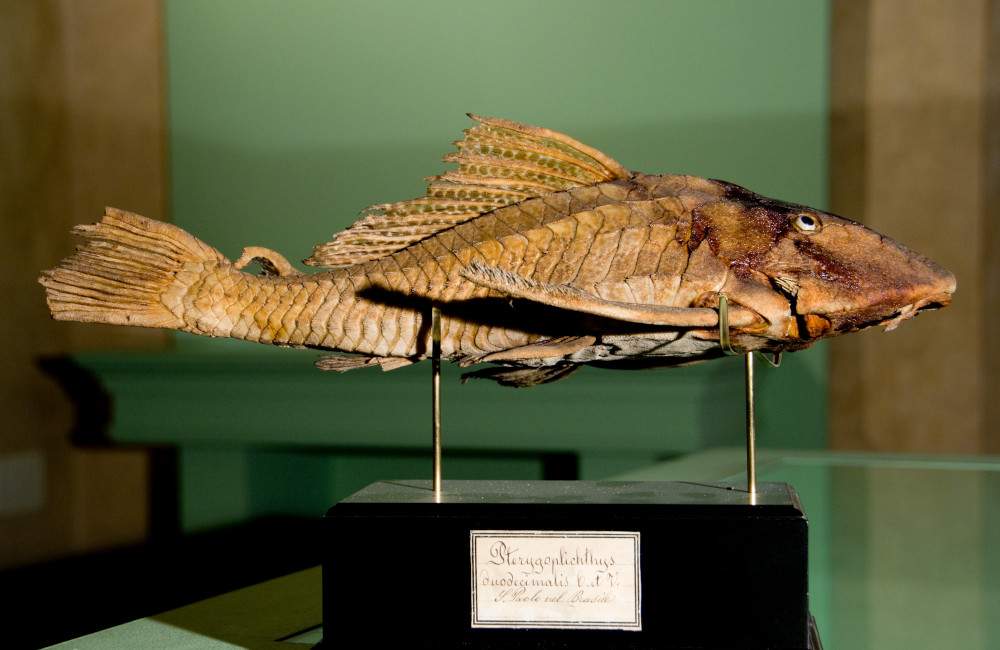Golinelli Foundation celebrates 500 years since the birth of Ulisse Aldrovandi with an exhibition between art and science
From Feb. 3 to May 28, 2023, the Golinelli Arts and Sciences Center in Bologna will host Oltre lo spazio, oltre il tempo - Il sogno di Ulisse Aldrovandi (Beyond Space, Beyond Time - The Dream of Ulisse Aldrovandi), an exhibition by Fondazione Golinelli and Sistema Museale di Ateneo, Alma Mater Studiorum - University of Bologna, curated by Roberto Balzani, Andrea Zanotti, Luca Ciancabilla and Antonio Danieli; under the patronage of the Ministry of Culture, the Emilia-Romagna Region and the Municipality of Bologna.
The exhibition will be composed of objects from the museum collections of the University of Bologna, specially created immersive and interactive exhibits, and works of modern and contemporary art, such as those by Nicola Samorì.
Key to interpreting the course of history and codifying new patterns to find new trajectories of societal development is the link between art and science, and the exhibition revolving around the figure of Ulisse Aldrovandi (1522-1605), among the greatest natural scientists of his time, whose 500th anniversary of his birth is being celebrated this year, starts from this reflection. Thanks to his extraordinary ability to observe, catalog and preserve the artifacts that nature, over the course of time, left behind, Aldrovandi is the proponent of the modern Natural History Museum.
The exhibition aims to highlight the deviations and sudden changes in direction, in short the discontinuities that have constituted the stages of man’s cognitive journey, and offer the public the tools to reflect on the progress of mankind. The project begins with humanity’s entry into History, the moment that marks the beginning of all that is knowable and the origin of man as a sentient being. The task of welcoming visitors is entrusted to some works by Nicola Samorì, an artist who continuously moves from sculpture to painting, back and forth in time operating a rewriting of art history and imagination.
We continue into the era of the scientific revolution, a crucial stage that opens the door to modernity and the infinite possibilities that knowledge and imagination, art and science, offer mankind. The spirit of the time is perfectly embodied by the figure of Aldrovandi, whose “ideal” study will be reproduced in a scenographic manner. Visitors will be able to admire some of the most significant mirabilia from the collections of the science museums of the University of Bologna’s Sistema Museale di Ateneo, such as fossils, minerals, meteorite fragments, and dinosaur eggs. Two of the Bolognese naturalist’s most relevant works, his Herbarium and his famous Historia Monstruorum, dialogue with period paintings and contemporary works with a naturalistic background, highlighting the symbiotic relationship between science and art. This link is also developed in a virtual dimension, with the reconstruction of a wunderkammer that holds other precious Aldrovandian treasures that traveling humanity will take with it on its journey toward progress.
The audience will then be taken into the future, to a setting that reproduces a human settlement on Mars, the last frontier stage reached by mankind, now projected toward the frontiers of the universe and knowledge. In this section, visitors will be able to experience, through interactive and immersive exhibits, some of the new conditions in which mankind will find itself living in the not-too-distant future: cabins simulating hibernation, stations to simulate a diet suitable for survival in space, and, again, multisensory installations to discover the smells of the universe. A second wunderkammer, mirroring the Aldrovandi wunderkammer, represents a window to the past: what things will humans have to take with them as a reminder of humanity, nature and life on Earth? The station will be actively accessible by visitors, who can compose their own personal chamber of wonders.
Throughout the visit, the public will also be fascinated by objects fromESA, the European Space Agency, and NASA, instruments and artifacts that scientists and engineers have built to push the frontiers of space exploration ever further and design humanity’s future on other planets. Among them, some models of space dwelling settlements and bricks made with 3D printing for the construction of moon bases will be on display, inventions that will enable humans to build architectural complexes in space, using innovative materials, such as moon dust. The human body in space travel will also undergo decisive transformations due to extreme conditions, such as weightlessness and exposure to gamma rays. On display are prototypes of human bones produced with three-dimensional bioprinting, a technology that will meet the need for astronauts to cope with medical emergencies, such as the need to perform surgeries.
The exhibition concludes with a selection of works that reinterpret the physicality of man, his transfigurations and dissolutions, from futurism to Nicola Samorì’s sculptural deformations.
The exhibition is part of the celebrations of the 500th anniversary of Aldovrandi’s birth, and sees synergy with the exhibition L’altro Rinascimento. Ulisse Aldovrandi and the Wonders of the World organized by the Sistema Museale di Ateneo, on display from Dec. 8, 2022 to April 10, 2023 at the Museo di Palazzo Poggi in Bologna. The public will enjoy cross-discounts to visit both exhibitions.
For info www.fondazionegolinelli.it
Image: Specimen of Pterygoplichthys sp. from São Paulo, Brazil (18th century; Ferdinando Marsili Collection, Museo di Palazzo Poggi)
 |
| Golinelli Foundation celebrates 500 years since the birth of Ulisse Aldrovandi with an exhibition between art and science |
Warning: the translation into English of the original Italian article was created using automatic tools. We undertake to review all articles, but we do not guarantee the total absence of inaccuracies in the translation due to the program. You can find the original by clicking on the ITA button. If you find any mistake,please contact us.





























